Presidents: Andrew Jackson
Birthplace and Boyhood Home: The Waxhaws, North and South Carolina
Visited in 2011.
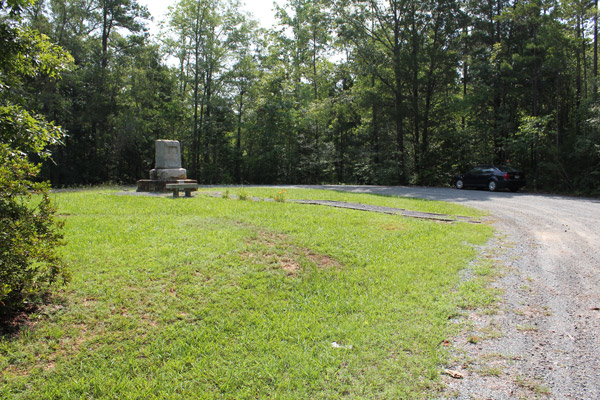
Union County, NC: Rolling up on the McCamie Cabin site.
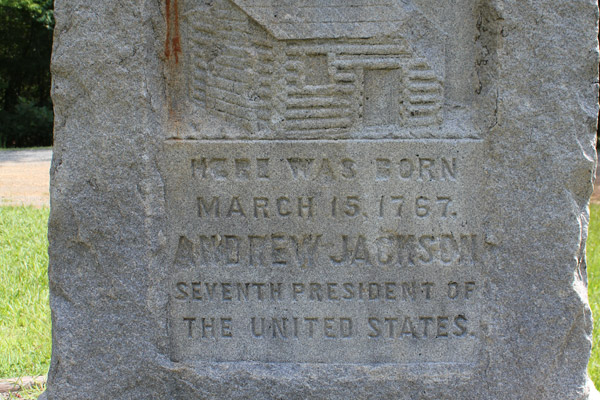
Union County, NC: If it's written in stone, it MUST be true!
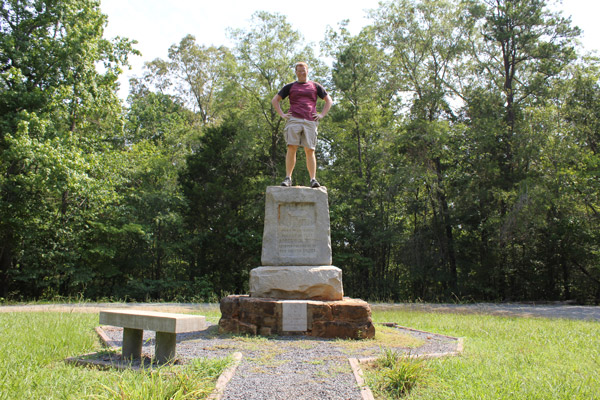
Union County, NC: Usually I'm more respectful to monuments, but Jackson would approve.
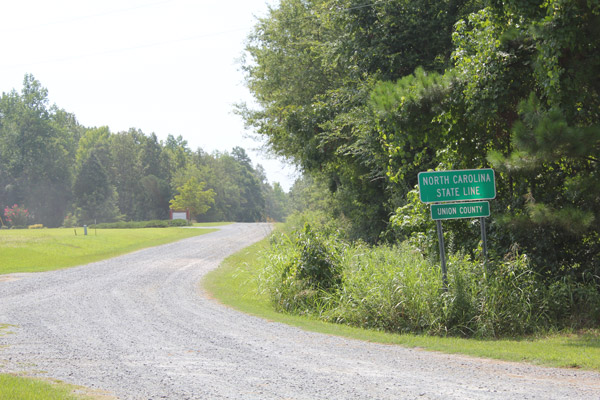
Union County, NC: The less-than-robust roads leading to the marker.
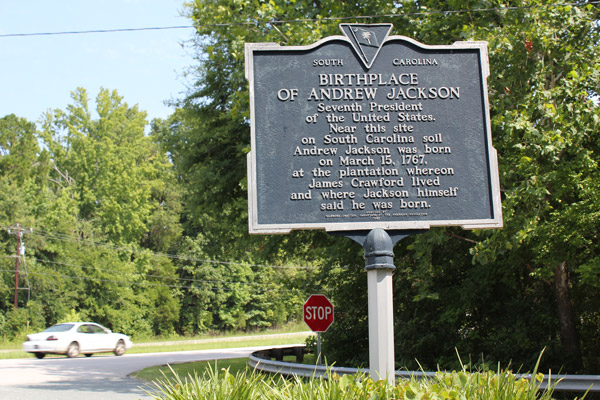
Lancaster, SC: "Jackson himself" is how the sign says "bite me, North Carolina."
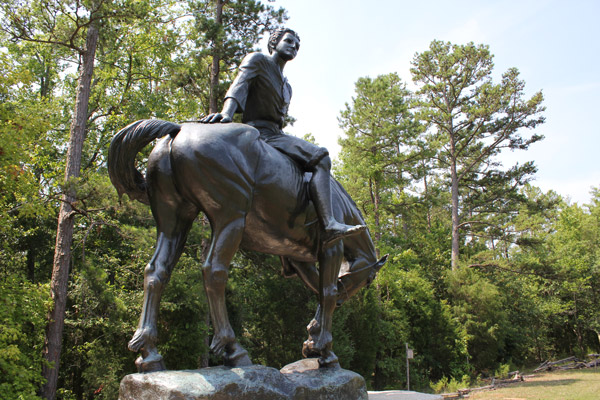
Lancaster, SC: Young Jackson, shown challenging a horse to a duel. (Probably.)
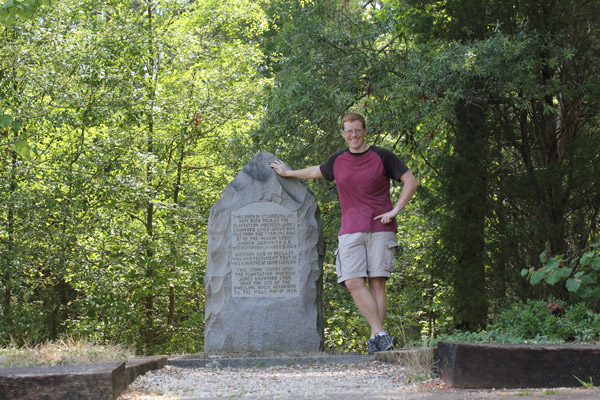
Lancaster, SC: This marker is pointier and wordier. But you can't stand on it.
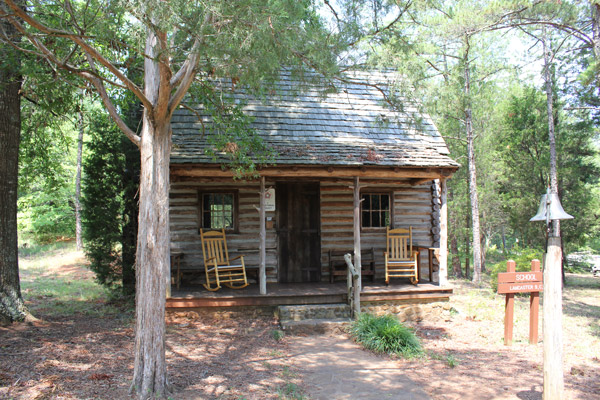
Lancaster, SC: The replica schoolhouse at Andrew Jackson State Park.
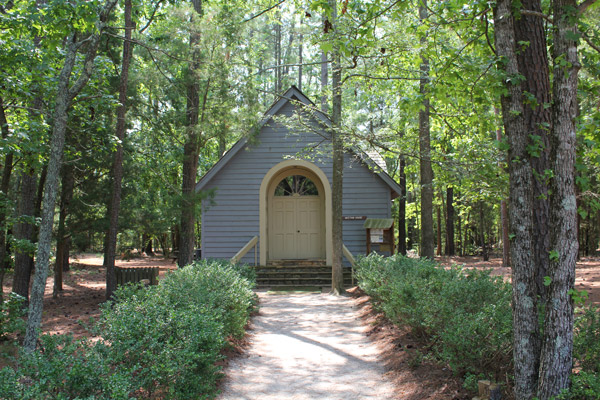
Lancaster, SC: The replica meeting house, where folks debated Andrew's latest hate crime.
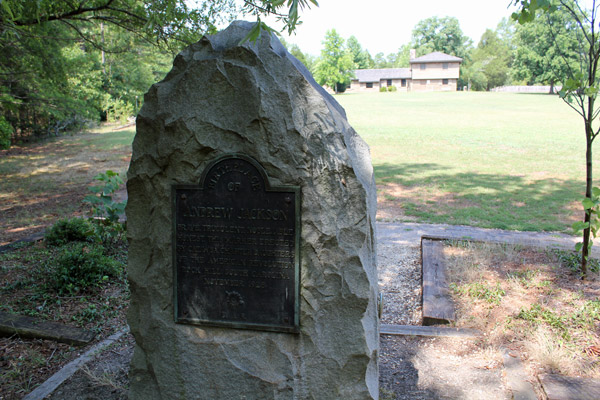
Lancaster, SC: The other side of the marker. The museum is in the distance.
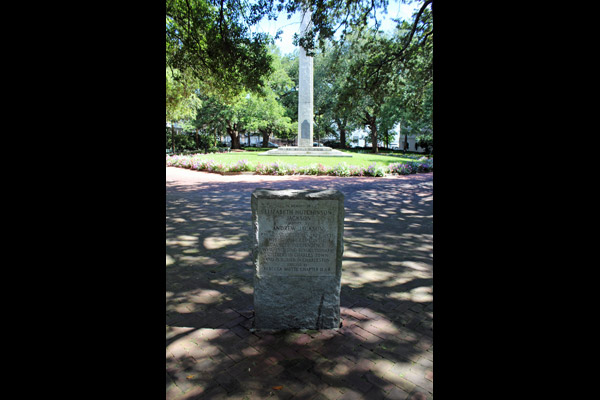
Charleston, SC: Bonus picture of a monument to Jackson's mom, near where she died.
Andrew Jackson was larger than life, so it's only fitting that he has two birthplaces.
The story goes that a very pregnant, moderately poor and recently widowed Elizabeth Jackson was wandering the countryside in 1767, looking for a place to drop her baby. The Irish immigrant went into labor at a relative's house, but which relative isn't exactly clear. One uncle, George McCamie, lived in present-day North Carolina. But her sister lived nearby in South Carolina. So where exactly did the blessed event occur?
The lack of certainty didn't stop the Daughters of the American Revolution from carving two answers into stone. According to a North Carolina DAR chapter, the one true monument is located in the middle of a gravel ring at the end of a gravel road. You can reach the circle -- about a quarter-mile inside the N.C. state line -- only from a South Carolina road. There are no signs anywhere indicating its location. You have to know it's there, and it really helps if you have a satellite picture of the region. If you go there past 9 p.m., a moonshiner will definitely shoot you.
But I found it! The marker is solid enough, and some of the stones supposedly came from the foundations of the McCamie cabin, which stood on that very site. You can climb on the monument if you want, and no one will yell at you, because you will almost certainly be the only person there.
And why will you be the only person there? Because most of the Andrew Jackson birthplace tourism is happening about 2 minutes away, where a South Carolina DAR chapter helpfully installed its own stone monument. Their monument clarifies that the sacred log cabin of Andrew Jackson's birth was really in their state, and that North Carolina can suck it.
South Carolina is clearly winning this battle, as their monument has infrastructure. Andrew Jackson State Park has paved roads leading up to its DAR marker! And beyond that, South Carolina is indisputably Jackson's boyhood home. Elizabeth Jackson and her sons moved in with her sister's family. Andrew's early years were spent with the Crawfords, so the state has reinforced the birthplace monument with a small museum on Jackson's childhood, an equestrian statue of young AJ, and re-creations of period-appropriate structures. (There's a schoolhouse and a meeting hall.)
We visit presidential birthplaces and boyhood homes to find out about formative episodes. Jackson's life in the Carolinas was nothing BUT formative episodes. The Waxhaws region (stretching over both states) was like a colonial Hazzard County, stocked with friendly relatives and troubling authority figures. During the Revolution, the British came through and tore stuff up; Jackson and his brother were captured when running errands for the local militia. Jackson suffered a saber scar to the face, and his brother died of smallpox contracted while he was a prisoner. Jackson's mother died a short time later, working as a nurse for wounded soldiers in Charleston. And somewhere in there, I bet Andrew got to second base while pressing some backwoods babe up against a pine tree. The point is, his time in the Waxhaws toughened him up -- to the point where he finally was able to get the hell out and go to Tennessee.
The rest is history: He becomes a military legend and political champion of the earthy backwoods people that made America great. In a true evolution of American democracy, Jackson was our first "common" president, and he learned to be so common in the Waxhaws.
I learned alot in the Waxhaws too. Chiefly, that the DAR likes to be thorough and once had a huge budget for stone markers.
The Hermitage, Nashville, Tennessee
Visited in 2005 and 2013.
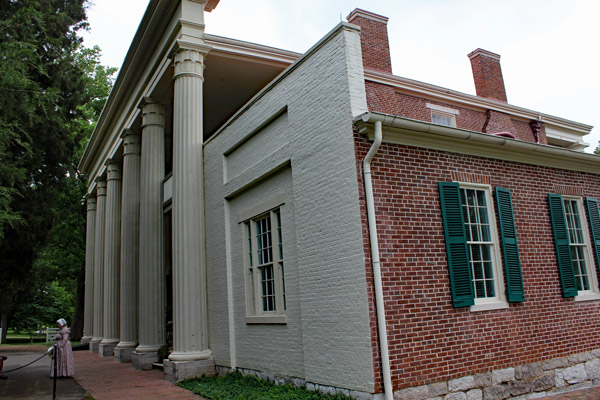
The faux-fabulous front of Andrew Jackson's famous home.
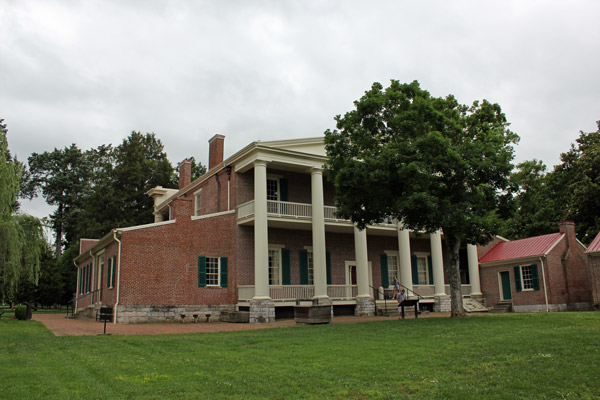
The rear of the house. Jackson died in the home in 1845.
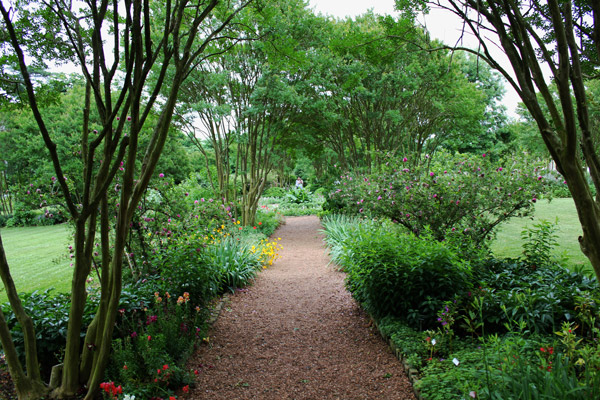
A path through the Hermitage gardens, which double as a graveyard.
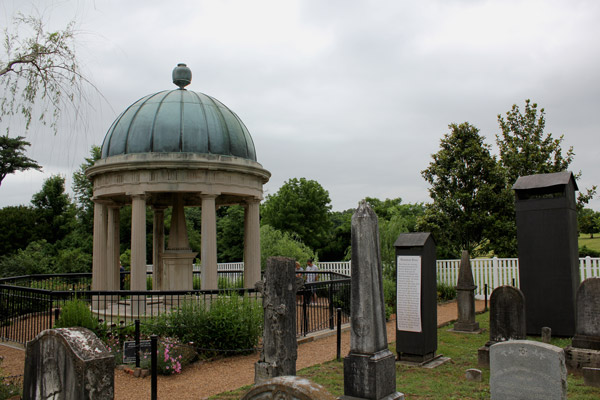
The gazebo thingy is the grave of Jackson and his wife.
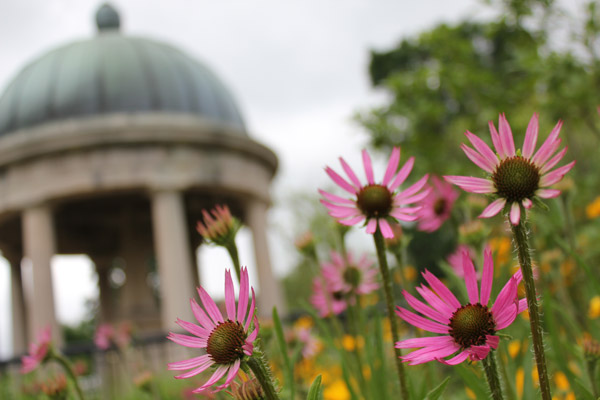
Personally fertilized by the corpse of our zaniest president.
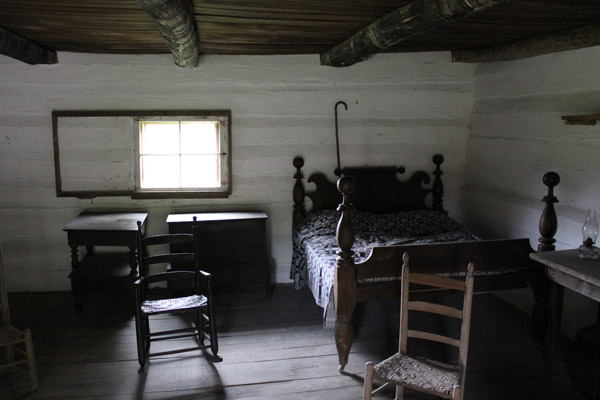
A look inside the "First Hermitage," the much rougher dwelling from the early years.
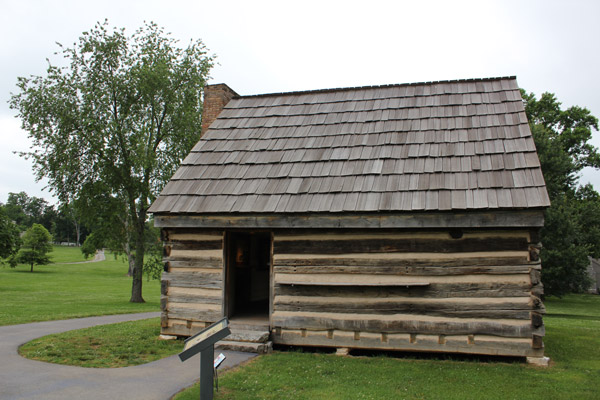
One of the outbuildings (maybe slave quarters) from the First Hermitage site.
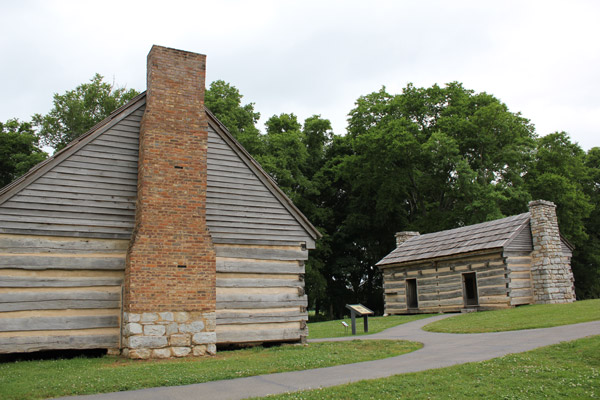
The one with the chimney is the "First Hermitage." The one with two doors is its kitchen.
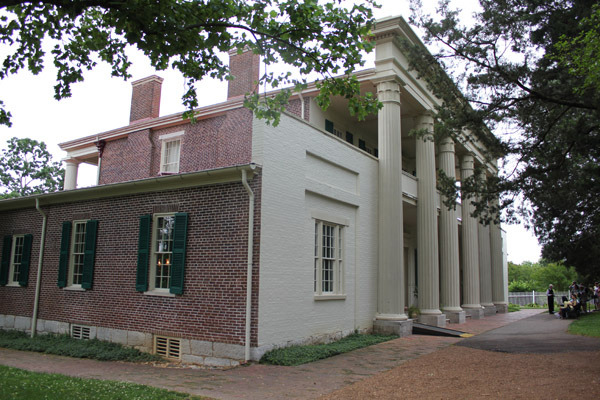
Another angle of the front. Those trees could use a trim, right?
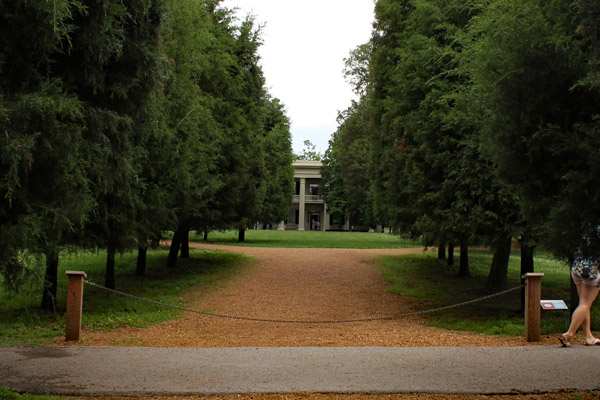
I guess if you're the most famous man in America you plant some privacy trees.
By 1828, our great experiment in constitutional democracy had survived a war with Britain, vast new territories had been added to the country, and power had been peacefully transferred between executives five times. There had been growing pains, but the system seemed stable enough to carry us forward into the foreseeable future. So the nation decided to have fun for once, and it elected our first cartoon president.
The great thing about Andrew Jackson is that many of the ridiculous, folk-tale-sounding stories about him are verifiably true. He did kill a man in a duel and survived a few potentially lethal fights. He did get involved in horrific real estate debacles. He did obliterate the British on the field of battle. He was a prisoner of war in the Revolution. He did have his own troops shot for disciplinary reasons. There was enough legal confusion about his marriage that he might have been a party to bigamy. He did threaten his political opponents in hilarious fashion. He did love racing horses. He did try to beat the crap out of a would-be assassin. And his election was celebrated with a mob of drunk morons trashing the White House. He could have named a bear his vice president and gotten away with it.
And beyond that, he was the iconic figure of a political movement that dominated America for about 30 years. Jacksonian Democracy was the belief that culturally elite wankers like Thomas Jefferson had governed enough, and that political power and voting rights should be pushed out to a much broader (but still white) group. Jackson wanted some powers kept away from the federal government , like central banking -- a position informed in part by his own personal investment disasters earlier in life. But he also believed in a strong executive, and he refused to acknowledge the right of states to ignore the federal government -- a position that glued together the union for a few extra decades.
It stands to reason that he should have a kick-ass house. Someone called Mount Vernon the autobiography George Washington never wrote; it really is a monument to his steady persistence and competence. The Hermitage, on the outskirts of Nashville, can't live up that standard. Instead of a mansion, it would have to be a giant dinosaur statue with monster trucks for shoes.
But it is one of the slicker setups, as far as presidential sites go. Jackson (who was a successful lawyer, as well as a perpetual potential defendant) acquired the property in 1804, when the countryside was a lot rougher. He and his wife spent the first 15 years or so in a simple log cabin, which they eventually expanded to two stories. The brick mansion was built as his fortune and fame grew -- he was a war hero and a successful politician by 1820. That mansion burned pretty badly in 1834, and Jackson had it rebuilt and improved at ridiculous expense; he died in that version of the house in 1845.
Then his adopted son (he had no children of his own) pissed away the family fortune and let the property slouch into disrepair. It's a minor miracle that it's still around for us to enjoy, but it is. What's left even seems reasonably authentic. There's nothing about the Hermitage mansion that's particularly mind-blowing, but it does have some character. The entry hallway is decorated with a remarkable French wallpaper. Wrapping around the whole room, it tells the story of Telemachus' search for his father (from "The Odyssey"). You can see a similar kind of story-telling wallpaper in the New York home of Martin Van Buren, the Robin to Jackson's political Batman. It was a trendy thing to have. The dining room looks like a nice place to entertain, and the bedrooms look like good place to sleep and eventually die. That's how they were used.
To me, the crown jewel of the property is the garden, where Jackson and his wife are buried. Rachel shuffled off the mortal coil in 1828, just after her husband had been elected president. She was in her 60s, which was a perfectly respectable age at which to die in those days. But Jackson was always convinced that presidential politics had killed her. Though her husband had no particular religious bent (at least before he was on his death bed), Rachel had become increasingly pious over the years. A few historians have speculated that her shift was motivated by guilt generated by the fuzzy circumstances of her first marriage, which was very ugly and ended with her fleeing her mildly unstable husband. During the campaigns of the 1820s, when people started questioning if that marriage had ever ended legally -- remember, Reagan and Trump are the only presidents to have been officially divorced -- Rachel got a case of the vapors. The stress might have helped to kill her.
Jackson wrote the epitaph on her grave:
"Here lie the remains of Mrs. Rachel Jackson, wife of President Jackson, who died December 22nd 1828, aged 61. Her face was fair, her person pleasing, her temper amiable, and her heart kind. She delighted in relieving the wants of her fellow-creatures,and cultivated that divine pleasure by the most liberal and unpretending methods. To the poor she was a benefactress; to the rich she was an example; to the wretched a comforter; to the prosperous an ornament. Her pity went hand in hand with her benevolence; and she thanked her Creator for being able to do good. A being so gentle and so virtuous, slander might wound but could not dishonor. Even death, when he tore her from the arms of her husband, could but transplant her to the bosom of her God."
As cartoony as Jackson was, I think he was also genuine. His passions often got the better of him, but they also drove him to remarkable things. You read an epitaph like that, and you really do believe that his greatest reward for living was the chance to be buried in the ground next to his wife. Romance!
And speaking of romance, the Hermitage was actually one of the first presidential sites I visited as a stand-up comedian. One of my first audition trips took me to Nashville, where I slept on the couch of a generous friend. Looking for something to do during the day, I figured the Hermitage was as good a thing as any. I didn't realize at the time that I was at the start of a 10-year journey through American history. I didn't take any notes on my first visit, and I never bothered to write it up. By the time I realized I had accidentally developed a hobby, the memories were too dull to do the place justice. But you can go home again.
